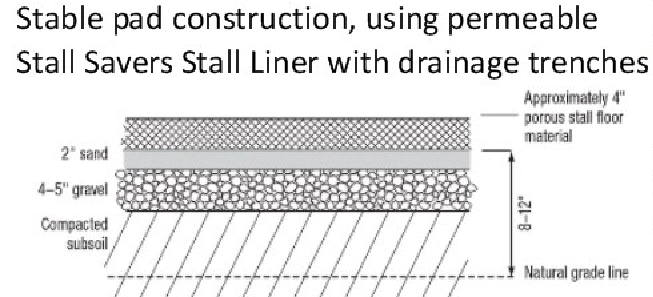So, I installed Stall Savers back in the summer. So they’ve only been in about 5-6 months.
I loved the ease of installation, compared to mats.
However, despite tons of testimonials I found online, I think they stink, literally.
Our barn is brand new. We installed them over screenings, over 2" gravel. (I can get specifics but it was done with max drainage in mind)
Its exactly the same as our drylot, which drains beautifully.
So, I started using shavings because that’s whats recommended - because you want the pee to flow through. I found that it didn’t, though. It would sit on the surface and smell. Eventaully it would drain but it would still just sit there.
Then I tried pellets just in the pee areas. That helps. So now I do pellets with shavings.
I still find that it has a funk at times. I was so excited because our barn is new, and pretty, and I would like it to be a place for people to hang out. But with the smell the way it is, I don’t like it.
Any suggestions on how to keep the smell down?
What Ive been doing recently is diluting Simple Green and pouring a small amount over the pee areas. However, I also think that the fact that it doesn’t dry doesn’t help matters.


